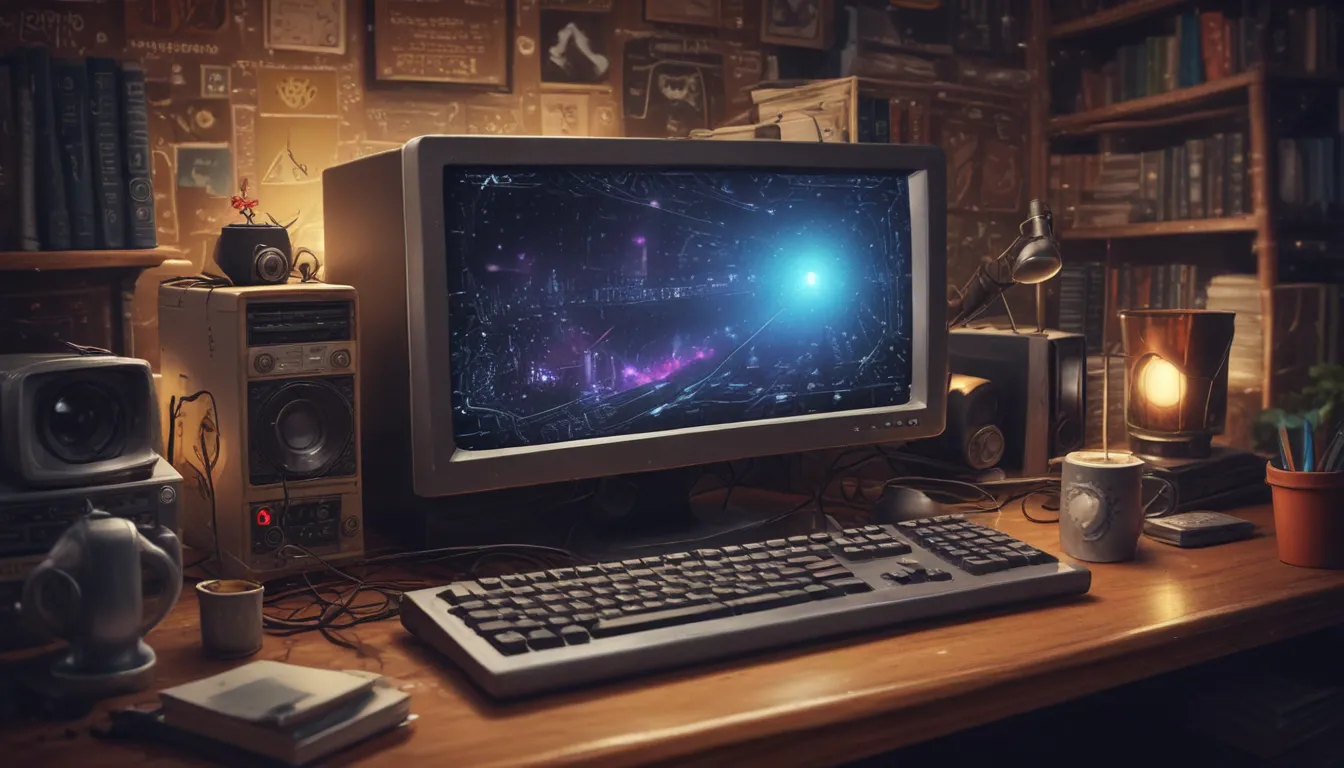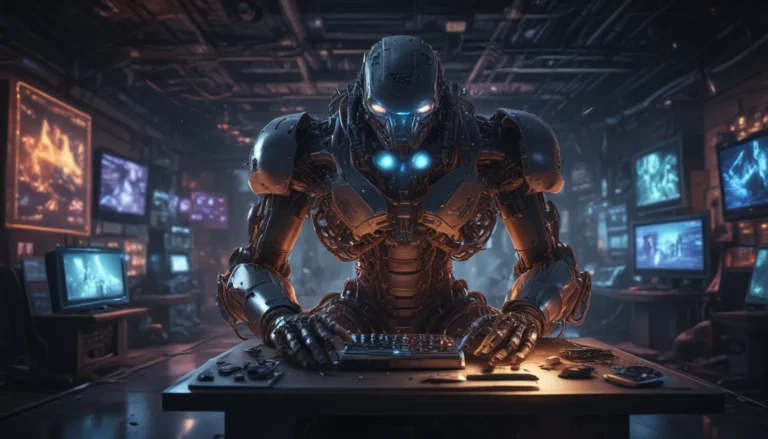A Note About Images: The images used in our articles are for illustration purposes only and may not exactly match the content. They are meant to engage readers, but the text should be relied upon for accurate information.
Computers have transformed the way we work, communicate, and entertain ourselves in modern society. While many of us rely on them for daily tasks, there are still countless fascinating facts about computers that remain unknown to the general public. In this article, we will delve into 30 interesting computer facts that will surprise and captivate you.
The Hidden World of Computers
1. One out of 8 people in the United States met online.
Believe it or not, one out of every eight people in the United States who marry each other initially met online. This statistic sheds light on the significant role that technology, particularly computers, play in modern relationships.
2. The United States Air Force used the first transistor computer.
The United States Air Force utilized the first transistor computer, called TRADIC, developed by engineers from Bell Labs. This groundbreaking machine marked a shift away from vacuum tube technology, paving the way for future innovations in computing.
3. 92% of the world’s currency exists only on computers.
Only a small fraction of the world’s currency exists in physical form, with the majority (92%) stored in digital format on computers. This highlights the critical role of computers in managing and preserving global financial systems.
The Dark Side of Technology
4. A random memory stick found in a parking lot hacked U.S military computers.
A memory stick found in a parking lot resulted in one of the most significant breaches of U.S military computer systems, orchestrated by a foreign intelligence agency. This incident underscores the importance of cybersecurity in safeguarding sensitive information.
5. Three students once hacked their teacher’s computers to sell grades.
Three students installed keystroke loggers on their teacher’s computers to steal test answers and sell grades to other students. This elaborate scheme was eventually uncovered during a routine check of campus computers, leading to legal repercussions for the perpetrators.
6. John Lasseter promoted computer animation and faced backlash.
Before becoming the CEO of Pixar, John Lasseter championed computer animation, which initially faced resistance. Despite being fired from Disney, he eventually returned to lead Pixar and revolutionize the animation industry with groundbreaking CGI films.
Pioneering Women in Computing
7. Mary Kenneth Keller is the first American woman with a Ph.D. in Computer Science.
In 1965, Mary Kenneth Keller became the first American woman to earn a Ph.D. in Computer Science. With a background in Mathematics and Physics, she paved the way for future generations of women in technology.
Cybersecurity Threats and Challenges
8. The Sasser worm targets computers running on Microsoft OS.
The Sasser worm specifically targets computers operating on Microsoft OS, exploiting vulnerable network ports to infiltrate systems. This malicious software poses a significant threat to cybersecurity, particularly in Microsoft XP operating systems.
9. A 15-year-old once notoriously hacked NASA.
A 15-year-old hacker breached NASA’s database, prompting a 21-day shutdown of operations and costing thousands of dollars in damage control. The perpetrator, Jonathan James, was placed under house arrest and closely monitored until he reached legal adulthood.
Intriguing Computer Trivia
10. Large banks process transactions by prioritizing high-value checks first.
Major banks employ computers to process checks and debit card charges, prioritizing significant transactions for rigorous scrutiny before clearance. This meticulous process ensures financial integrity and security in banking operations.
11. The performance of a computer compared to the human brain.
A computer as powerful as the human brain would be capable of performing 38,000 trillion operations per second, reflecting the remarkable computational capacity of the human brain.
Quirky Computer Facts
12. The Tandy TRS-80 Model I computer emits radio interference.
The Tandy TRS-80 Model I computer emits significant radio interference, necessitating the use of an AM radio to reproduce sound effects in games. This quirky feature adds a unique touch to the gaming experience.
13. The QWERTY keyboard’s unconventional origins.
The QWERTY keyboard layout was designed to slow down typing speed, preventing mechanical typewriters from jamming due to rapid key presses. This historical quirk has persisted in modern keyboards, shaping how we interact with computers.
The Evolution of Computing
14. Computers’ humble beginnings in garages.
Tech giants HP, Apple, and Microsoft all began their computer development journeys in humble garage settings. These iconic companies’ origins highlight the innovative spirit and entrepreneurial drive that fueled the growth of the tech industry.
15. Amazon’s digital book dominance.
Amazon now sells more ebooks than hardcover books, illustrating the shift towards digital media consumption in the modern era. This trend reflects changing consumer preferences for convenience and accessibility in reading.
Fun Computer Trivia
16. The Windows Interface Manager’s unconventional structural choices.
The Windows 98 OS featured a unique design quirk where windows would extend beyond the average monitor resolution, a creative workaround to minimize clutter on the screen. Despite its unconventional approach, this design choice was ahead of its time.
17. The origins of the computer mouse.
Douglas Englebert invented the first computer mouse in 1964, fashioned from wood. This pioneering input device revolutionized human-computer interaction, shaping the way we navigate and interact with digital interfaces.
Cybersecurity Insights
18. The proliferation of computer viruses.
Every month, over 5000 new computer viruses are released, posing a constant threat to digital security. To combat this escalating risk, cybersecurity measures must continually evolve to protect sensitive information and systems.
19. John McAfee’s unconventional stance on his own antivirus program.
The founder of the McAfee Antivirus program, John McAfee, admitted to not using his own software due to its perceived intrusiveness. This unexpected revelation sheds light on the complexities of cybersecurity software development.
Inspirational Women in Tech
20. The woman who shaped YouTube’s success.
The woman who rented her garage to Larry Page and Sergey Brin in 1998 later became the CEO of YouTube, exemplifying the transformative potential of women in technology leadership roles. Susan Wojcicki’s journey highlights the power of resilience and innovation in shaping digital platforms.
Conclusion
In conclusion, the world of computers is vast, multifaceted, and full of remarkable facts that continue to intrigue and inspire us. From pioneering women in tech to cybersecurity challenges, each aspect of computing offers valuable insights and opportunities for learning. By exploring these intriguing computer facts, we gain a deeper appreciation for the role of technology in shaping our lives and driving innovation forward. Let these compelling tidbits spark your curiosity and ignite your passion for the ever-evolving world of computers.






